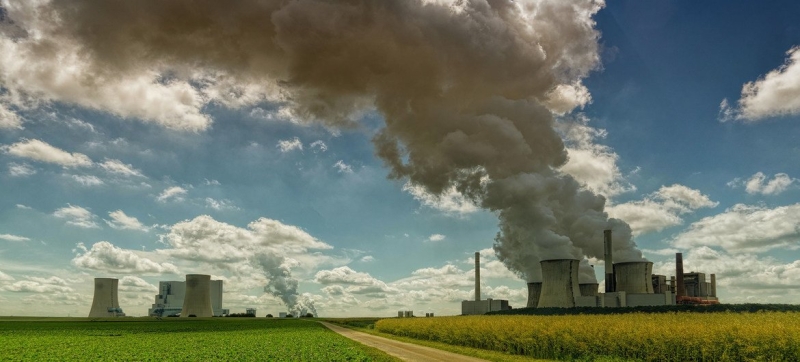
As long as emissions continue, greenhouse gases will continue to accumulate in the atmosphere, causing global temperatures to rise. Greenhouse Gas Concentrations Reach New Record Highs in 2023 Climate & Environment
Greenhouse gas levels rose to new record highs in 2023, threatening to raise global temperatures for years to come, according to a report from the World Meteorological Organization (WMO). Carbon dioxide is accumulating in the atmosphere faster than at any time in human history, increasing by more than 10 percent in just two decades.
Emissions from vegetation fires and possible reductions in forest carbon uptake, combined with still-high fossil fuel emissions, have led to further increases in greenhouse gas concentrations in 2023, according to the WMO’s annual Greenhouse Gas Bulletin.
Another record
Last year, global average ground-level concentrations of carbon dioxide, methane and nitrous oxide increased by 151 percent, 265 percent and 125 percent, respectively, compared with pre-industrial levels, the Bulletin said.
“Another year. Another record. This should alarm decision-makers. We are clearly behind the Paris Agreement goal of limiting global warming to well below 2 degrees Celsius and aiming for 1.5 degrees Celsius above pre-industrial levels. This is more than just a statistic. Every part per million and every fraction of a degree of temperature increase has a real impact on our lives and our planet,” said WMO Secretary-General Celeste Saulo.
The increase in atmospheric carbon dioxide in 2023 was larger than in 2022, but smaller than in the three previous years. Since the Bulletins began 20 years ago, carbon dioxide concentrations have increased by 11.4 percent compared with the level recorded in 2004 by the WMO Global Atmosphere Watch network of monitoring stations.
Vicious Circle
This fact sheet reports on gas concentrations, not emissions. Analysis of the data shows that just under half of carbon dioxide emissions remain in the atmosphere. Just over a quarter is absorbed by the ocean and just under 30 percent by land ecosystems, although these figures vary significantly from year to year due to natural phenomena such as El Niño and La Niña.
The Greenhouse Gas Fact Sheet complements the UN Environment Programme’s Emissions Gap Report. Both documents were published ahead of the COP29 climate conference, which will take place in Baku, Azerbaijan, from 11 to 22 November.
Read also:
INTERVIEW | Baku prepares to host the world’s largest climate conference
“The bulletin warns that we are facing a potential vicious cycle. Natural climate variability plays a large role in the carbon cycle. But in the near future, climate change itself could cause ecosystems to become larger sources of greenhouse gases. Wildfires could lead to more carbon dioxide being released into the atmosphere, while warmer oceans could absorb less CO2. This could leave more CO2 in the atmosphere, accelerating global warming. These climate feedbacks are a critical issue for humanity,” said WMO Deputy Secretary-General Co Barrett.
Long-lived gases
From 1990 to 2023, the radiative forcing of long-lived greenhouse gases on our climate — the warming effect — increased by 51.5 percent, with CO2 accounting for about 81 percent of that increase, according to the National Oceanic and Atmospheric Administration’s (NOAA) Annual Greenhouse Gas Index, published in the WMO Bulletin.
As long as emissions continue, greenhouse gases will accumulate in the atmosphere, leading to global temperatures rising. Given that CO2 is an extremely long-lived greenhouse gas, the temperature levels already observed would persist for several decades even if emissions were drastically reduced to net zero.
The last time comparable CO2 concentrations were seen on Earth was 3-5 million years ago, when air temperatures were 2-3 degrees Celsius warmer and sea levels were 10-20 meters higher than they are now.
